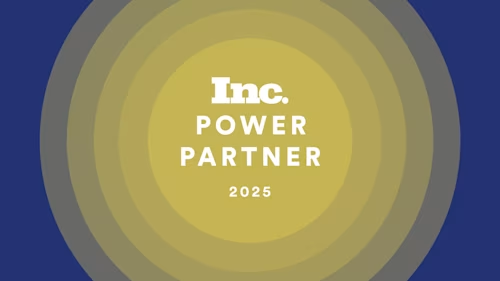
Five Key Steps to a Successful CLM Implementation
Five basic principles from our colleagues at Deloitte to give your team the best chance at a successful CLM implementation and digital transformation.

Modern legal organizations have caught on to the value of contract lifecycle management (CLM) tools. While they were once a rare advantage, today they are an expected tool to keep up with the competition. CLMs can radically simplify agreement processes, which means legal teams can operate more efficiently and achieve their desired outcomes faster. Besides improving speed, it can also increase security and standardize audit controls across organizational data, which helps with compliance efforts.
There are a lot of reasons to deploy a CLM tool, but unfortunately, the path to adoption is often riddled with challenges. If CLM isn’t adopted correctly, contract complexity can get out of control, reducing some of the efficiency gains and decreasing the speed of adoption.
It’s critical to proactively take steps to avoid the most common pitfalls of CLM implementation and build an easy, trusted workflow to maximize contract value. In this blog, we’ll blend CLM implementation advice from the perspective of our team and our friends at Deloitte. We’ll recommend the levers to pull to make sure CLM gives legal professionals better control over end-to-end contracting work and generates ROI.
Five basic steps to drive a successful CLM implementation
Our colleagues at Deloitte are experts at planning and executing CLM implementation. Here are five basic principles that they share to give your team the best chance at a successful transformation.
1. Start with process improvements and define a clear strategy
Adopting a CLM tool is a good chance to completely remake your end-to-end agreement workflow. Do not simply codify your existing system by setting up your CLM to mirror the disconnected system it’s replacing. Instead, honestly assess your team’s performance on agreement tasks and design something new that will maximize visibility and reduce manual handoffs. Build your CLM as a means of realizing your future, not just replicating your past and present.
2. Fix your data
CLM tools are technology, which means they depend on information to function properly. Better data in your CLM tool means better outcomes. Before you upload contracts into your new CLM, do yourself a favor and clean up your contract library. Make decisions about which agreements should be included and excluded in that database. Remove duplicate agreements. Brainstorm ways to use AI or other information to simplify the migration.
3. Select the right technology
Once you have a blueprint for your desired CLM outcomes and you’ve prepared your agreement data, it’s time to pick a vendor that can help you get where you want to go. Docusign CLM has been a leader in the Gartner Magic Quadrant for CLM for four years running and has a long history of successful implementations across organizations of all sizes and in all industries.
4. Start small and take a phased approach
It’s important to realize that adopting a CLM is not a simple on/off switch. It involves completely uprooting the status quo with respect to process, data, content and people. It’s unlikely that all of those pieces will be equally ready for change at the beginning of your CLM journey. To give your team the best chance at success, start with a small piece that has the best chance at success. Maybe it’s contract generation or search. Once you’ve chalked up a win, you can expand bit by bit until the end-to-end transformation is complete.
5. Manage the change
The absolute most critical piece of CLM adoption is the people who use the technology every day. Your CLM implementation plan needs to start with an empathetic understanding of the agreement work employees are doing every day and deliver real value to them. Provide hands-on training. Make their day-to-day work simpler or faster. Design the new technology to take work off their to-do list. Share the big-picture vision with them and make sure they understand the role they play in it. All technology change is personal change too, so keep your team at the heart of your plans.
Signs that your CLM implementation is working as planned
Once your team has kicked off its CLM implementation plan, you’ll start noticing a few specific improvements that are signposts along the journey of your transformation. The first thing you’ll notice is an overall acceleration of the speed of business. Your sales cycles will get shorter. Your negotiations will be resolved faster. Your organization will realize revenue from agreements sooner. Whatever problematic steps come to mind when you think about your current agreement process, CLM can help solve problems and increase operational speed.
You’ll also notice that agreement steps have far more efficiency and require less human involvement. Throughout the end-to-end agreement process, CLM has features to reduce the number of human touchpoints. Your team can replace printing and mailing contracts with electronic signature, improve visibility by digitizing agreements, automate routing activities and more. Anything you can do to take repetitive, redundant tasks off your employees’ plates means they’ll have more time to spend on new projects that can benefit from their attention.
Overall, your contract value will improve as you eliminate areas of value leakage and improve contract quality. A CLM tool will improve terms and monitor performance to help minimize errors in consumption, delivery or contract deviation. It can also give your legal team better visibility into high-level data about the entire agreement library, which will help reduce risks and compliance failures.
The standardization and simplification effects add up to a significant ROI from CLM adoption. Forrester's Total Economic Impact of CLM report estimates that the typical Docusign CLM customer sees a 356% return. Better yet, since the agreement process involves so many teams at the organization, everyone will see the benefits of CLM firsthand in their everyday activities.
If your team wants to know more about the do’s and don’ts of the CLM implementation process, Docusign can help. Watch our free CLM Done Right webinar with implementation experts from Deloitte to dive into three of these steps and give your team the best chance at successfully deploying a CLM tool.
If you want to talk to a Docusign expert about your CLM implementation plan, reach out to us and we’ll help guide you through the process.
Related posts
Docusign IAM is the agreement platform your business needs




